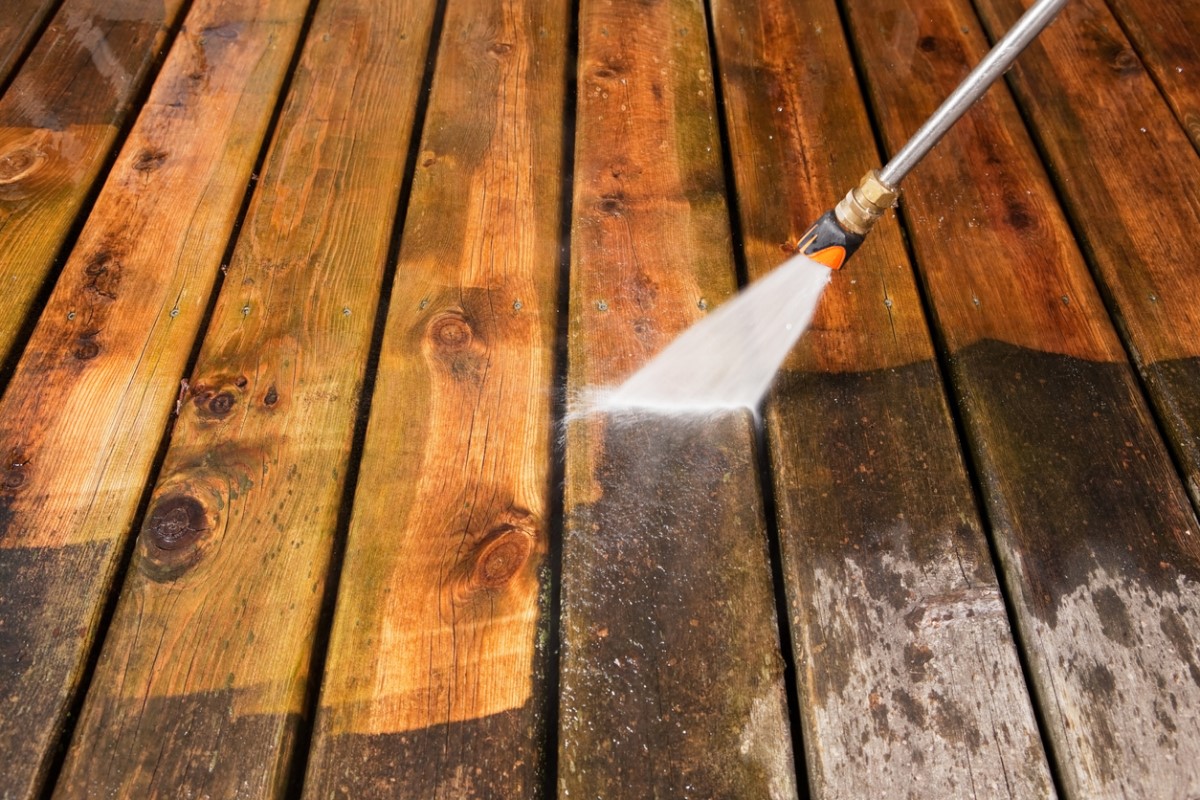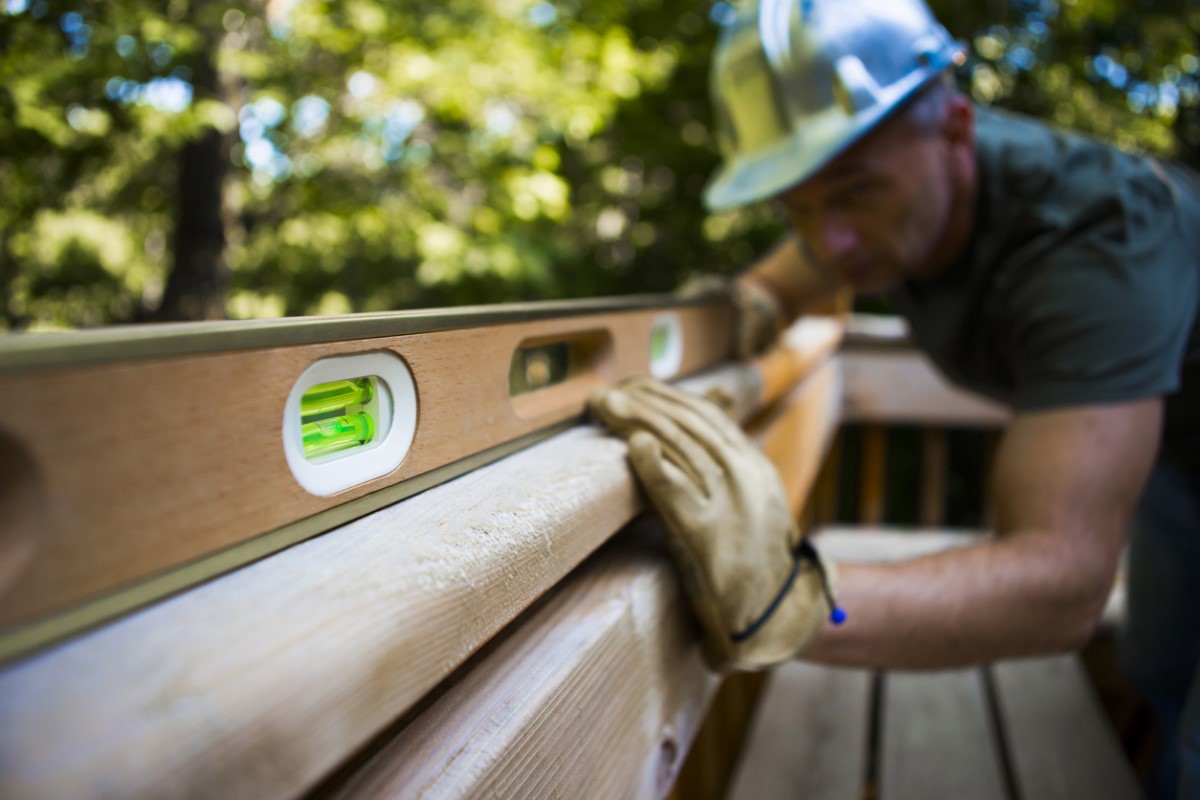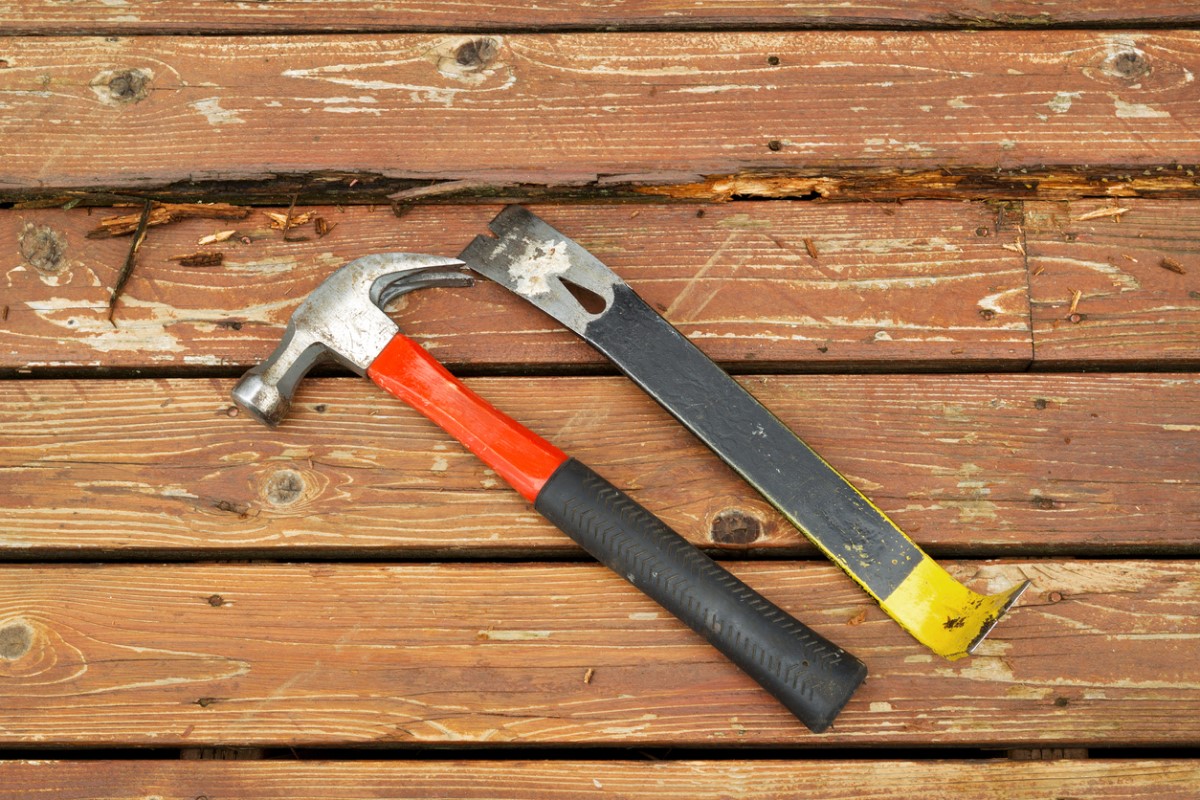We may earn revenue from the products available on this page and participate in affiliate programs. Learn More ›
A well-built deck increases your living and entertaining space and boosts your home’s value, with a nice 70 percent cost recoup when you decide to sell. But with heavy use and constant exposure to the elements, a deck’s wooden surfaces require a fair amount of attention and maintenance to retain their looks and stay sturdy and safe season after season.
Over time, a deck is subject to a number of issues, both cosmetic and structural. Has your deck seen better days? Do you wonder if it can last one more season, or do you think it’s time to completely scrap it and start fresh? Read through this list of six common deck problems to see what repairs your deck may need and to help you decide whether to DIY the fixes or call in a pro to take care of the damage.
Discoloration: Correct with new stain.
Discoloration isn’t a safety issue for your deck, but it sure is unsightly. Fixing discoloration involves stripping the existing color off the boards, washing the wood, and applying a deck stain with good UV protection. This is a simple deck repair that even a novice DIYer can handle. Because inclement weather can foil a staining project, it’s best to take this on in the late summer or early fall when temperatures are mild (below 80 degrees Fahrenheit), there’s less humidity, and there’s no call for rain in the forecast.

Slippery surfaces: Save with a pressure washer.
If you slip around on your deck like it’s a slick block of ice, the issue is probably a large buildup of algae or moisture. This can be easily remedied with a good pressure-washing to clear off any slippery spots that are unsafe to walk on. Power-wash your deck once a year in early spring, after the snow has melted and before you pull out all your grilling and patio equipment.
Cracks: Fill and seal.
Although cracking on a deck isn’t attractive, it’s usually just a normal sign of aging. If the cracks are less than six inches long, all you need to do is fill them in with latex wood filler and then finish off the deck with sealant. If, however, the cracks are longer than that, you’ll need to pry off the affected boards and check the underside for damage. If the underside of the board looks clean, flip it over and reattach it with deck screws to the joists; if there are cracks on the underside, replace the board completely.
The wood on your deck is constantly expanding and contracting as humidity levels and the seasons change. To get the best results, perform maintenance on cracks every year in the fall, before the dry air of winter sets in, which can cause existing cracks to deepen and create new ones.
Rotted boards: Replace right away.
When boards rot, water damage or insects are the typical culprits. If ignored, rot can spread and cause serious structural deterioration, so you should tackle wood rot one board at a time. (This is a great deck repair project for the more advanced DIYer.) Begin by removing nails and screws using a hammer and pry bar, then remove the rotted board. If necessary, use a circular saw to cut out the board, but be careful not to slice surrounding boards. Finally, measure and cut your new board to size and screw it into the joist. If the wood rot is widespread, this job may be better left to the pros as you may need multiple boards—and even joists—replaced.
Large gaps between boards: Close them up.
When your deck is laid, ⅛- to ¼-inch gaps are intentionally incorporated for drainage. Over time, the wood will inevitably shrink, causing wider and more troublesome gaps to form in between the deck boards. These can potentially become tripping hazards, so it’s best to remedy wide gaps right away by replacing all the boards with new ones that have been cut to size—a challenging deck repair, but doable in a weekend.
To minimize future gapping in between your deck boards, it’s important to understand that wood boards have a range of moisture content (MC) depending on how they’re treated and dried. The best wood moisture content for outdoor projects will depend on your area’s climate, so ask the experts at your local lumberyard when purchasing, and double-check that all your deck boards have the same MC so they dry uniformly. When you’re ready to install, space boards evenly across the deck, either tightly if they’ll shrink or with about ⅛ inch between pairs.

Wobbles: Call a pro.
The last thing you want when you walk out onto your deck is to feel the structure lurch. Wobbliness could be due to termite damage, prolonged wood rot, or poor installation. Any time you have structural damage in your home, it’s best to call in an experienced professional immediately who can correct the issue or help you install a brand-new and, most importantly, safe deck.
Be sure to vet your contractor properly by researching online reviews and getting referrals from trusted friends or neighbors. Check that the person who will be working on your home has experience with the type of deck repair you need so you can avoid the hassle—and extra expense—of mistakes. If you’re not up for DIYing the smaller deck repairs, find a good handyman who can be trusted to do the job right without charging you an arm and a leg.
The content is paid advertising created in partnership with Puls. Its facts and opinions are those of BobVila.com.
